Excerpts from Jim Conrad's
Naturalist Newsletter
entry from field notes dated April 17, 2022, taken in disturbed/reforesting borderline cloudforest within 1km of Valle de los Fantasmas, elevation ±2,320m (7600 ft), with limestone bedrock; about 40kms (24 miles), straight-line, ESE of San Luis Potosí, San Luis Potosí state, MÉXICO, (N22.06°, W100.62°)
BROOMSTICK TREE
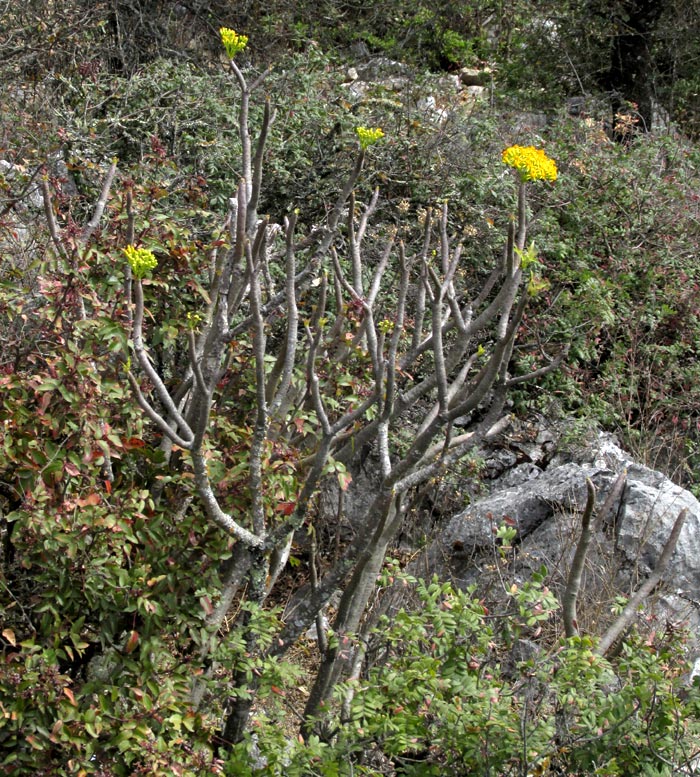
The above picture shows what's possibly the most eye-catching of everything seen during the whole camping trip. Emerging from among a tangle of bushes, the top, flower-tipped branches reach about 4m high (13ft). A smaller plant rooted among limestone rocks nearby gives a better impression of the succulent, thick-stemmed growth form:
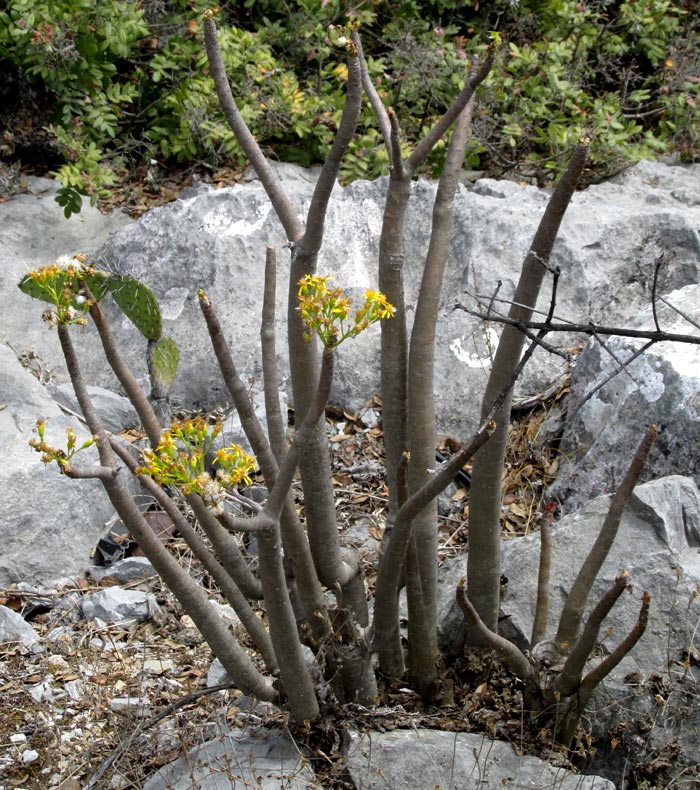
A closer look at the flowering heads leaves no doubt about which plant family we're dealing with:
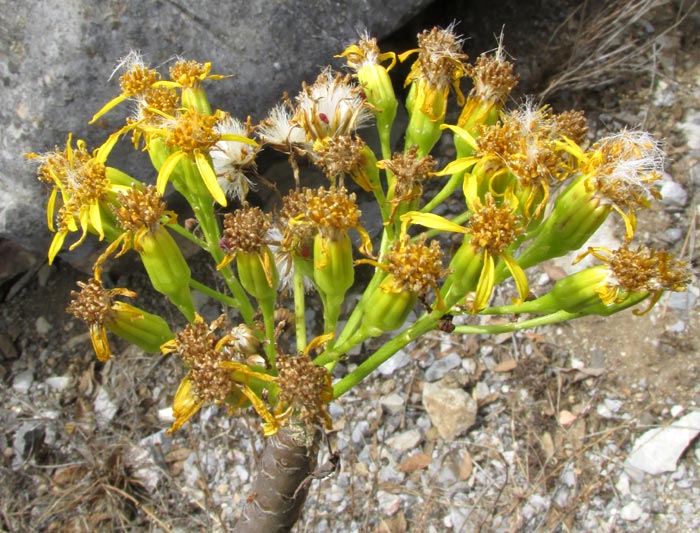
With flat, yellow ray florets arising from around each flowering head, and cylindrical disc florets crammed into the heads' centers, despite the plant's exotic appearance, it belongs to the largest, most commonly encountered of all Mexican plant families, the vast Composite or Aster Family, the Asteraceae. Moreover, a close-up of an individual head indicates that the plant is part of a commonly occurring tribe of the family:
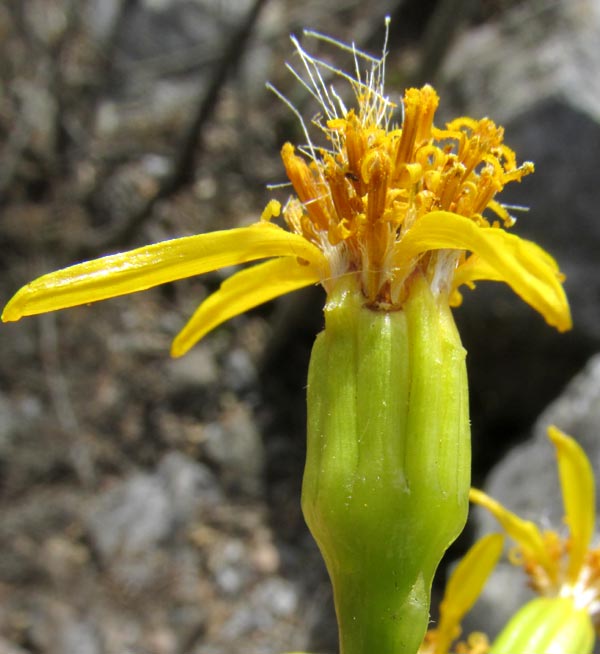
People in the Temperate Zone who pay attention to wildflowers will recognize from the head's yellow florets and the form of the green, urn-shaped involucre from which the florets arise -- especially how the involucre's individual narrow, scale-like phyllaries are all of more or less the same length, and don't overlap one another -- as part of that large bunch of plants commonly known as groundsels, ragworts and butterweeds, traditionally all considered to belong to the one big genus Senecio, comprising over a thousand species worldwide. Some of this plant's flowering heads already were producing cypsela-type one-seeded fruits topped with white hairs forming a kind of parachute aiding wind dispersal, just like the Senecios, as shown below:
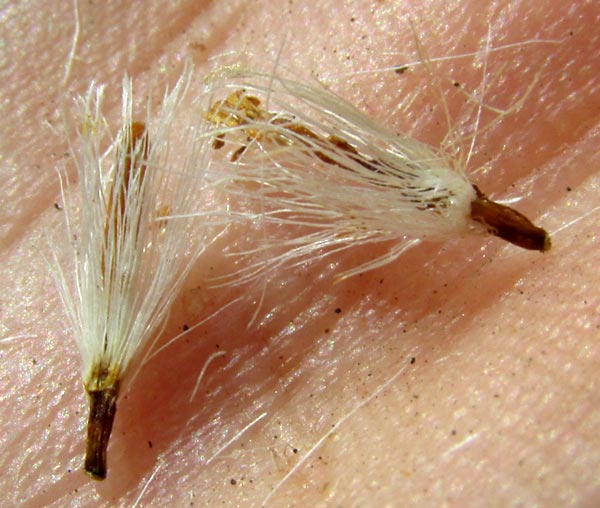
With such distinctive features and the flowers clearly indicating the plant's taxonomic affinities, it was easy to figure out that this is what Spanish speakers call Palo Loco, or "Crazy Tree," and what English speaking gardeners who grow the species for its appearance often call Broomstick Tree. It's PITTOCAULON PRAECOX, formerly named Senecio praecox.
Broomstick Tree is distributed from about here, the north-central state of San Luis Potosí, south through the arid Mexican highlands as far as Oaxaca, between the elevations of 1500-2490m (4900-8200ft). It flowers from February into June, and remains leafless through the dry season.
Five species of the genus Pittocaulon are recognized, and in this area one of those species also might turn up, Pittocaulon velatum, which looks fairly similar. In the Aster-Family volume of the excellent online Flora del Valle de Tehuacán-Cuicatlán, key differences between the two species are described:
Traditionally a tea made from the Broomstick Tree's leaves has been used to alleviate skin problems, "rheumatism" and wounds in general.